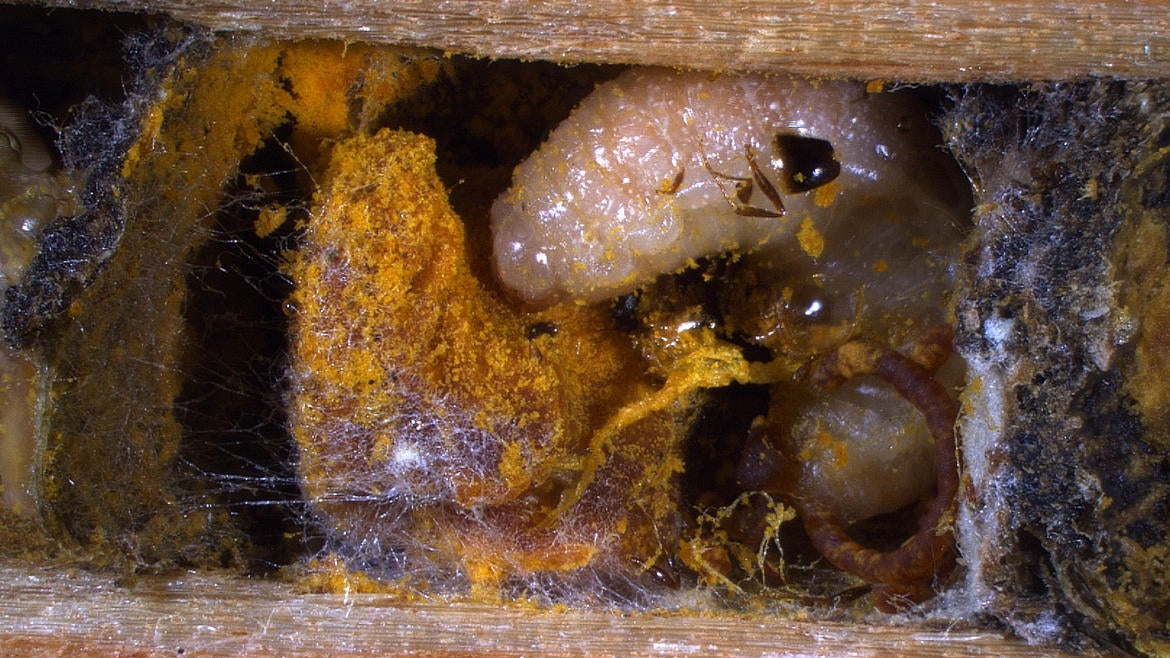
Research
1) Flower- and bee-associated microbiomes. One of our main research foci is on the microbiomes associated with wild bees. We have discovered and described bacteria that we isolated from both flowers and the pollen provisions and guts of wild bees. We use shotgun metagenomics, amplicon sequencing, whole-genome sequences and traditional microbiology techniques to understand these microbial communities. We have also found that flower- and bee-associated bacteria can inhibit the growth of certain fungi in vitro. The McFrederick lab’s work in this area is beginning to coalesce into an understanding of how bee foraging and pollen provision filtering influence associated microbial communities.
2) Bee pathogens. While honey bee diseases are well studied, we know very little about the pathogens and parasites of most other bees. In collaboration with Scott McArt, Lynn Adler, Becky Irwin, Steve Ellner, Nils Knapp, and Chris Myers we are continuing our work to understand how pathogens move through plant pollinator networks. Our main part of this work is to understand strain-specificity (or lack thereof) of the trypanosomatid Crithidia bombi. In a separate line of research, we are conducting comparative genomics of commensal and pathogenic Ascosphaera in an effort to understand how pathogenicity evolves in these fungi.
(3) Microbes and environmental toxins. We have several completed and ongoing projects that are increasing our ability to leverage microbes to protect bees from environmental toxins such as soil contaminants and pesticides. Former graduate student Jason Rothman showed that the bumble bee microbiome increases host survival when challenged with field-realistic doses of selenium. Current graduate student Laura Leger is following up on this line of work.
(4) Microbes and corbiculate bee health. We collaborate with James Nieh's group at UCSD; we showed that certain Gilliamella apicola strains positively correlate with Nosema ceranae colony susceptibility and we are following up on that work. We are very interested in the stingless bee microbiome, especially with regards to the vulture bees that are obligately necrophagous. We found that the vulture bee gut microbiome is enriched in novel acidophilic microbes, much like necrophagous vertebrates. We are continuing this line of work.
